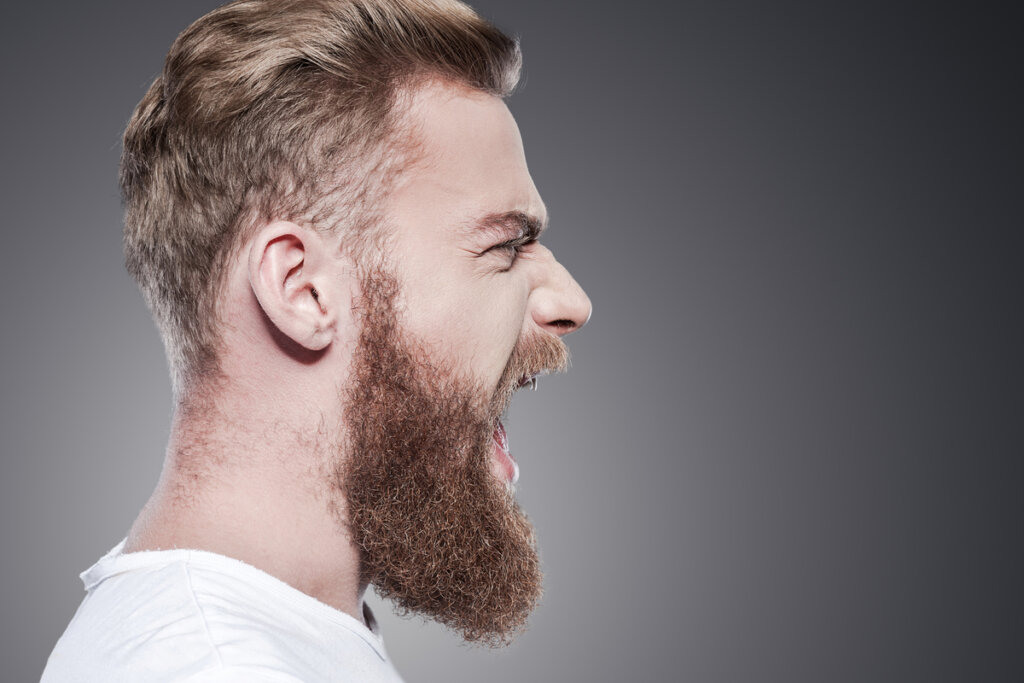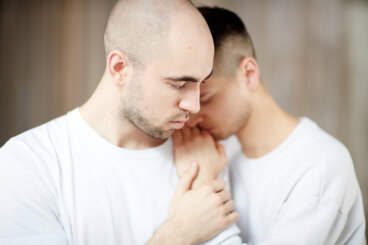Are Beards a Sexual Signal?

There’s a whole world of controversy surrounding beards, even though, at first glance, they’re nothing more than secondary characteristics of being male. Some people hate them, some love them, and in certain populations, there’s a whole culture around them. Taking this into account, it’s pretty normal for many to wonder if beards are a sexual signal.
Beards are one of the most visually prominent male secondary sexual traits and a sexually dimorphic characteristic of our species. They play an important role in communication and social processes such as competitiveness, aggression, and sexuality.
In this article, you’ll be able to explore the biological background and symbolism of male beards. Furthermore, you’ll discover if they have any relevance when it comes to choosing a partner.

The biological utility of the beard
Primitive man is always conceptualized as having a beard. The earliest known razor blades were made of copper and are 5,000 years old. Therefore, there’s good reason to think that facial hair has a function related to survival.
Initially, the hypothesis was that beards helped preserve body heat. However, this would only really make sense if human females and babies also had it, since anyone can get cold.
On the other hand, it’s also been proposed that beards have functions similar to the mane of the lion and other non-human animals, in that they guard against attacks. In this regard, it’s worth citing a 2018 study of professional wrestlers. It found no evidence that facial hair was associated with either fewer knockouts or greater fighting ability.
Beards and non-verbal communication
To discover if beards are a sexual signal, we must evaluate their potential to transmit information. As a matter of fact, research claims that they directly influence the perception of facial expressions.
In a 2021 study, faces displaying anger were categorized more quickly and accurately in bearded faces, followed by faces with stubble, and then clean-shaven faces. In contrast, happy facial expressions were first identified on clean-shaven faces, followed by faces with stubble, then bearded faces.
On the other hand, faces with full beards received the highest masculinity ratings, followed by clean-shaven faces. In short, behaviors associated with masculinity, such as aggressiveness and intrasexual status, are more closely related to beards.
Does this mean that aggressiveness and sexuality go together?
Clearly, the answer is no. Even if a person is sexually attracted to the masculine appearance of a beard, many more factors come into play. The most important has to do with the behavior of each individual. Therefore, a man with a beard certainly won’t be attractive if they exhibit violent behavior.

Are beards a sexual signal?
Since the evolutionary function of beards is yet to be confirmed, the functions they fulfill when it comes to relating remains to be seen. When it comes to aesthetic tastes (fashions aside), variability matters. Some people love beards, while others associate them with dirtiness or a lack of grooming.
A study published in the journal, Evolution and Human Behavior, found that women were more attracted to men with beards in lower-middle-income countries. On the other hand, beards are more common in more populated geographical areas.
How is it possible that this information yields statistically significant results? Well, the study authors suggested that, in conditions of demographic overcrowding, which favor anonymity, displays of masculinity tend to be amplified.
Following this reasoning, beards would indeed be a sexual sign, since there’s a tendency for men to display them to stand out in the face of potential partners.
Finally, when considering what’s considered attractive, we must take into account the role of cultural and aesthetic norms. In fact, although there’s some biological basis, the standards that indicate what’s ‘attractive’ respond to random patterns that are imposed on collective thinking. So whether you love or hate beards is all simply a matter of taste.
There’s a whole world of controversy surrounding beards, even though, at first glance, they’re nothing more than secondary characteristics of being male. Some people hate them, some love them, and in certain populations, there’s a whole culture around them. Taking this into account, it’s pretty normal for many to wonder if beards are a sexual signal.
Beards are one of the most visually prominent male secondary sexual traits and a sexually dimorphic characteristic of our species. They play an important role in communication and social processes such as competitiveness, aggression, and sexuality.
In this article, you’ll be able to explore the biological background and symbolism of male beards. Furthermore, you’ll discover if they have any relevance when it comes to choosing a partner.

The biological utility of the beard
Primitive man is always conceptualized as having a beard. The earliest known razor blades were made of copper and are 5,000 years old. Therefore, there’s good reason to think that facial hair has a function related to survival.
Initially, the hypothesis was that beards helped preserve body heat. However, this would only really make sense if human females and babies also had it, since anyone can get cold.
On the other hand, it’s also been proposed that beards have functions similar to the mane of the lion and other non-human animals, in that they guard against attacks. In this regard, it’s worth citing a 2018 study of professional wrestlers. It found no evidence that facial hair was associated with either fewer knockouts or greater fighting ability.
Beards and non-verbal communication
To discover if beards are a sexual signal, we must evaluate their potential to transmit information. As a matter of fact, research claims that they directly influence the perception of facial expressions.
In a 2021 study, faces displaying anger were categorized more quickly and accurately in bearded faces, followed by faces with stubble, and then clean-shaven faces. In contrast, happy facial expressions were first identified on clean-shaven faces, followed by faces with stubble, then bearded faces.
On the other hand, faces with full beards received the highest masculinity ratings, followed by clean-shaven faces. In short, behaviors associated with masculinity, such as aggressiveness and intrasexual status, are more closely related to beards.
Does this mean that aggressiveness and sexuality go together?
Clearly, the answer is no. Even if a person is sexually attracted to the masculine appearance of a beard, many more factors come into play. The most important has to do with the behavior of each individual. Therefore, a man with a beard certainly won’t be attractive if they exhibit violent behavior.

Are beards a sexual signal?
Since the evolutionary function of beards is yet to be confirmed, the functions they fulfill when it comes to relating remains to be seen. When it comes to aesthetic tastes (fashions aside), variability matters. Some people love beards, while others associate them with dirtiness or a lack of grooming.
A study published in the journal, Evolution and Human Behavior, found that women were more attracted to men with beards in lower-middle-income countries. On the other hand, beards are more common in more populated geographical areas.
How is it possible that this information yields statistically significant results? Well, the study authors suggested that, in conditions of demographic overcrowding, which favor anonymity, displays of masculinity tend to be amplified.
Following this reasoning, beards would indeed be a sexual sign, since there’s a tendency for men to display them to stand out in the face of potential partners.
Finally, when considering what’s considered attractive, we must take into account the role of cultural and aesthetic norms. In fact, although there’s some biological basis, the standards that indicate what’s ‘attractive’ respond to random patterns that are imposed on collective thinking. So whether you love or hate beards is all simply a matter of taste.
All cited sources were thoroughly reviewed by our team to ensure their quality, reliability, currency, and validity. The bibliography of this article was considered reliable and of academic or scientific accuracy.
- Dixson, B. J., Barkhuizen, C. L., & Craig, B. M. (2021). Beards Increase the Speed, Accuracy, and Explicit Judgments of Facial Threat. Adaptive Human Behavior and Physiology, 7(4), 347-362.
- Dixson, B. J., Rantala, M. J., Melo, E. F., & Brooks, R. C. (2017). Beards and the big city: Displays of masculinity may be amplified under crowded conditions. Evolution and Human Behavior, 38(2), 259-264.
- Dixson, B. J., Sherlock, J. M., Cornwell, W. K., & Kasumovic, M. M. (2018). Contest competition and men’s facial hair: beards may not provide advantages in combat. Evolution and Human Behavior, 39(2), 147-153.
This text is provided for informational purposes only and does not replace consultation with a professional. If in doubt, consult your specialist.







